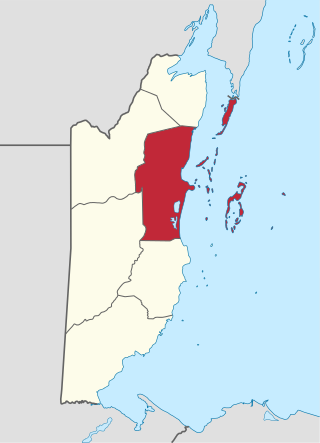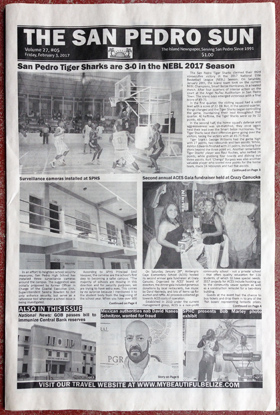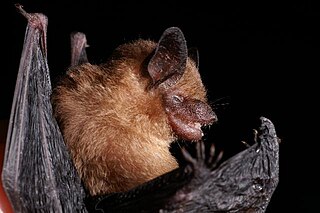
Belize is a small Central American nation, located at 17°15' north of the equator and 88°45' west of the Prime Meridian on the Yucatán Peninsula. It borders the Caribbean Sea to the east, with 386 km of coastline. It has a total of 542 km of land borders—Mexico to the north-northwest (272 km) and Guatemala to the south-southwest (266 km). Belize's total size is 22,966 km2 (8,867 sq mi), of which 22,806 km2 (8,805 sq mi) is land and 160 km2 (62 sq mi) is water.

Belize District is a district of the nation of Belize. Its capital is Belize City.

San Pedro is a town on the southern part of the island of Ambergris Caye in the Belize District of the nation of Belize, in Central America. According to the 2015 mid-year estimates, the town has a population of about 16,444. It is the second-largest town in the Belize District and largest in the Belize Rural South constituency. The once sleepy fishing village was granted the status of a town in 1984.

Ambergris Caye, is the largest island of Belize, located northeast of the country's mainland, in the Caribbean Sea. It is about 40 kilometres (25 mi) long from north to south, and about 1.6 kilometres (1 mi) wide. Many parts of the island have been modified by human development since the arrival of coconut plantations in the 17th century, but it remains largely white coral sand with mangrove forest at its center. Its eastern coast runs parallel to the northernmost stretch of the Belize Barrier Reef, a UNESCO World Heritage Site.
Ambergris Today is an English-language weekly newspaper published in San Pedro Town, Ambergris Caye, Belize. It is a free newspaper, marketed to tourists.

The San Pedro Sun is a newspaper published continuously since 1991 and serves the community of San Pedro Town located on Ambergris Caye in Belize, Central America. The newspaper is owned and managed by Ron and Tamara Sniffin. Graphic design and layout is done by Mary Gonzalez. Dennis Craft is on staff as a journalist. The Sun also publishes a "Visitor's Guide" each week that features tourism interests in San Pedro and Belize. The Visitor Guide is inserted inside each issue of The San Pedro Sun.

John Greif II Airport is an airport that serves San Pedro and Ambergris Caye, Belize. It was renamed from San Pedro Airport to John Greif II Airport in 2010.

The Belize Coast Guard is the maritime security, search and rescue, and the maritime and law enforcement service branch of Belize. The BCG is under the Ministry of Home Affairs.
The 2007–08 season of the Belize Premier Football League, otherwise known as the RFG Insurance Cup, began on September 30, 2007 and concluded in April 2008. FC Belize of Belize City entered as defending champions.
San Pedro Seadogs is a Belizean football team which currently competes in the Premier League of Belize of the Football Federation of Belize.

The Yucatan yellow bat is a species of bat found in the Yucatán Peninsula in Mexico, and possibly also in Belize and Guatemala. These small insectivorous bats forage on flying insects at dawn and dusk.
Ambergris Museum is a Mesoamerican archaeology museum in Belize. It houses ancient Mayan civilization artifacts.
Bacalar Chico National Park and Marine Reserve (BCNPMR) is a protected area and UNESCO World Heritage Site on the northern part of Ambergris Caye in Belize.
Mexico Rocks is a shallow patch reef complex located off the far northern tip of Ambergris Caye, and is part of the Belize Barrier Reef system in the Caribbean Sea. The site consists of approximately 100 Holocene patch reefs clustered on a Pleistocene ridge of limestone and is composed predominantly of boulder star corals. The reef has accumulated in shallow water, about 2.5 to 5 metres deep, over the last 420 years, under static sea level conditions. The site was recommended for designation as a marine preserve in 1978, and was approved in 2015 as a part of the Hol Chan Marine Reserve. The reef is popular among snorkelers and SCUBA divers, and it is seen as an important addition to Ambergris Caye's ecotourism attractions.

Marco Gonzalez is a Maya archaeological site located near the southern tip of Ambergris Caye off the coast of Belize. It was first recorded in 1984 by Drs. Elizabeth Graham and David M. Pendergast, and was named by them after their local guide.

The 1942 Belize hurricane was one of only two known hurricanes to strike Belize in the month of November, alongside Hurricane Lisa in 2022. The thirteenth observed tropical cyclone, eleventh tropical storm, and fourth hurricane of the 1942 Atlantic hurricane season, this storm was detected in the vicinity of Turks and Caicos Islands on November 5. Initially a tropical storm, it strengthened slowly while moving westward and then south-southwestward across the Bahamas. On November 6, the storm became a Category 1 hurricane on the modern day Saffir–Simpson hurricane wind scale. Later that day, it made landfall in Cayo Romano, Camagüey Province, Cuba. Impact in Cuba and the Bahamas was limited to lower barometric pressure readings and strong winds. While crossing Cuba, the system weakened to a tropical storm early on November 7, shortly before emerging into the Caribbean Sea. The storm re-strengthened into a hurricane later that day and headed southwestward.

The extensive trade networks of the Ancient Maya contributed largely to the success of their civilization spanning three millennia. Maya royal control and the wide distribution of foreign and domestic commodities for both population sustenance and social affluence are hallmarks of the Maya visible throughout much of the iconography found in the archaeological record. In particular, moderately long-distance trade of foreign commodities from the Caribbean and Gulf Coasts provided the larger inland Maya cities with the resources they needed to sustain settled population levels in the several thousands. Though the ruling class essentially controlled the trade economy, a middle merchant class supervised import and export from cities and trade ports. Not much is known of the Maya merchant class; however, merchants of royal lineage are sometimes represented in the iconography. Notably, a canoe paddle often accompanies the royal merchant depictions, signifying their association with marine resources.
Elizabeth Graham is a professor of Mesoamerican Archaeology at UCL. She has worked, for decades, on the Maya civilization, both in prehispanic and colonial times, specifically in Belize. She has recently turned her attention to Maya Dark Earths, and conducts pioneering work in the Maya region as dark earths have mostly been studied in the Amazonia. She particularly focuses on how human occupation influences soil formation and production.

Hugo Patt is a politician from Belize from United Democratic Party. He served as the deputy prime minister of Belize and the acting prime minister of Belize from 6 July 2019 to 9 July 2019 and serving as Member of the House of Representatives from Corozal North. He also served as the minister of Natural Resources from 2018 and minister of Local Government and Rural Development. He was Deputy Prime Minister of Belize from February 2020 to November 2020.












